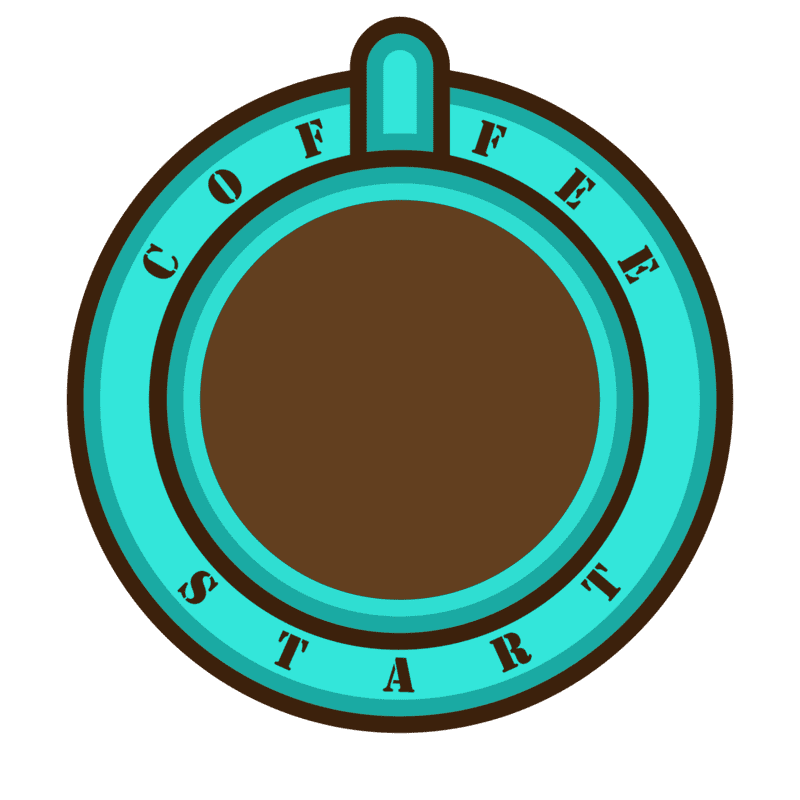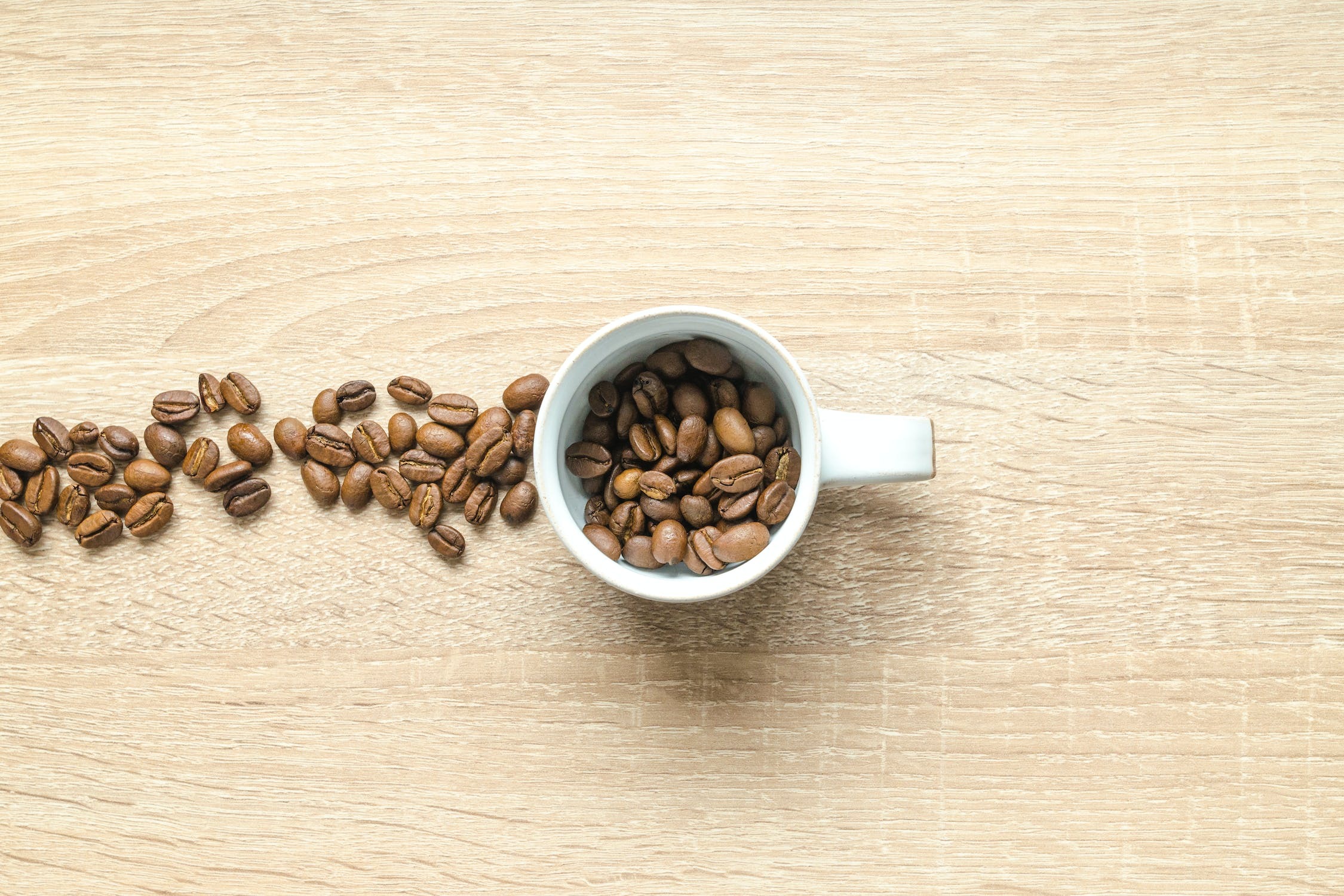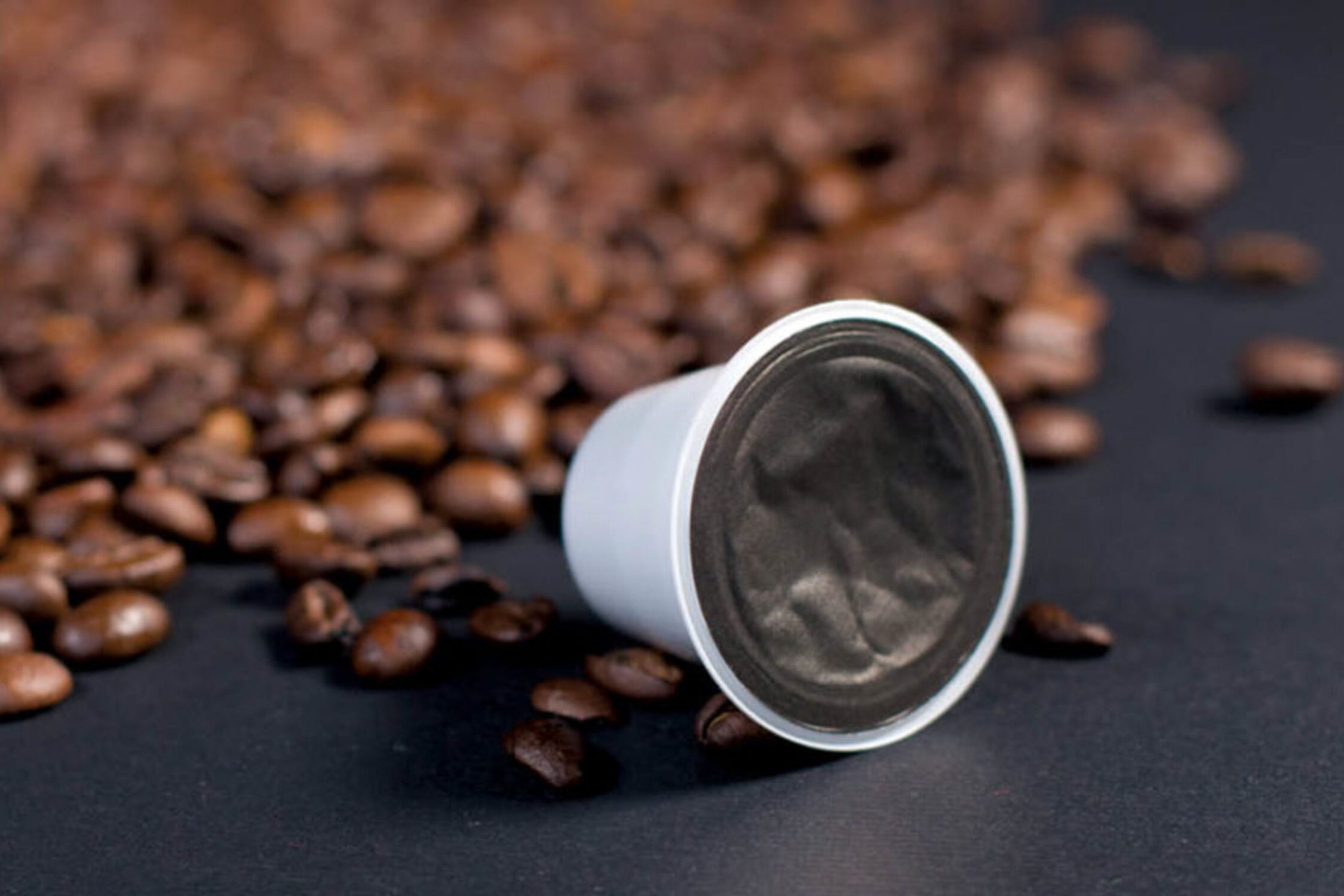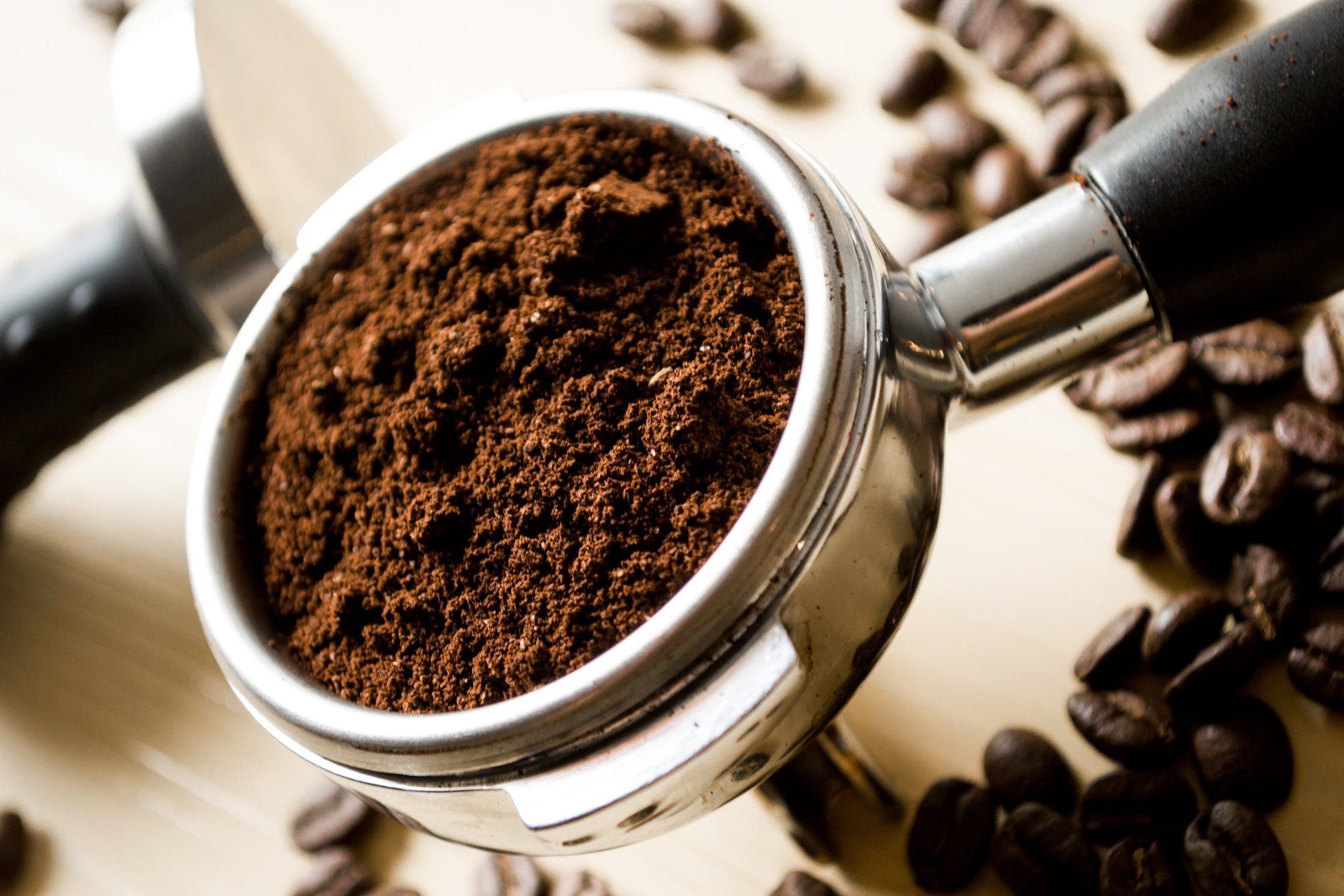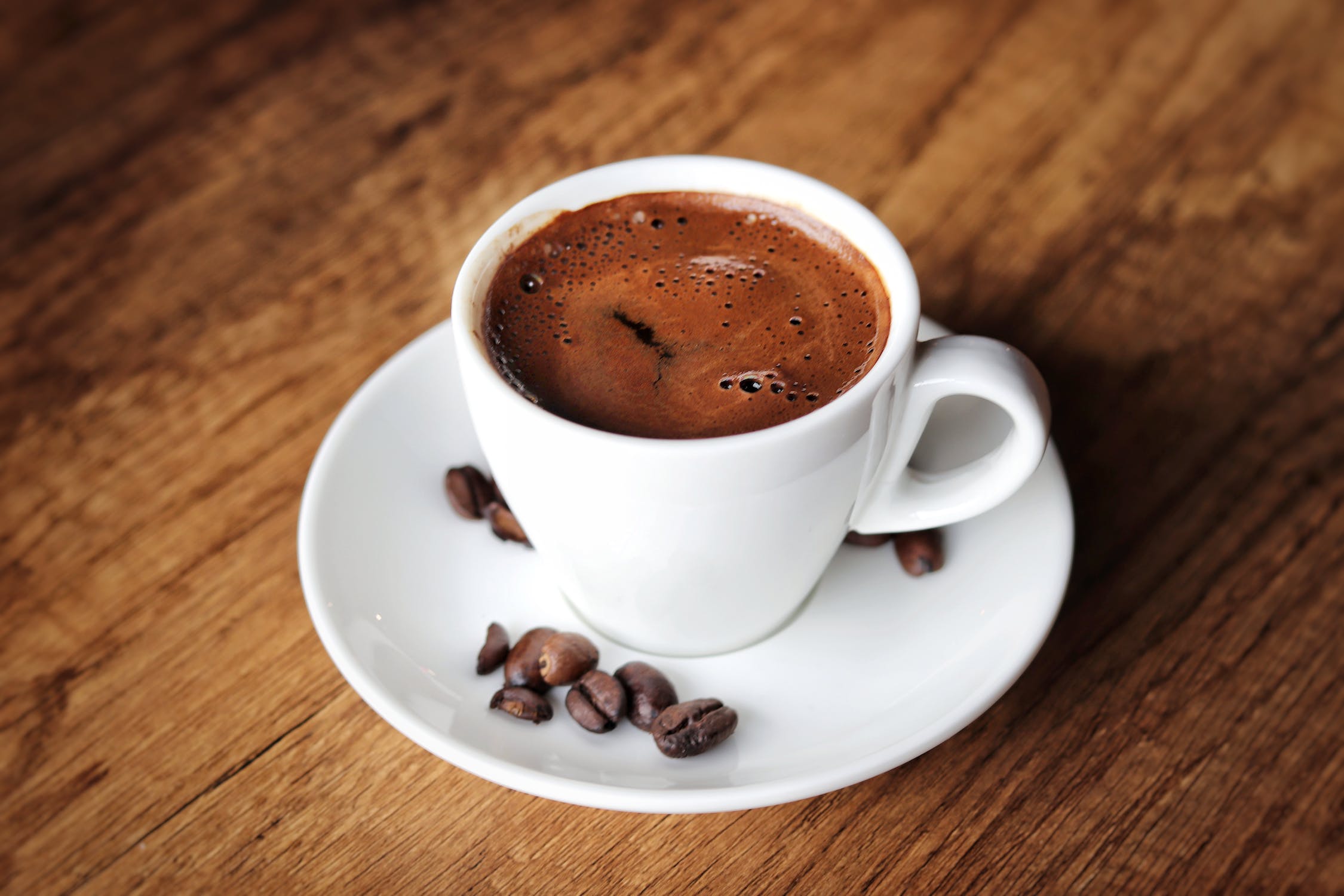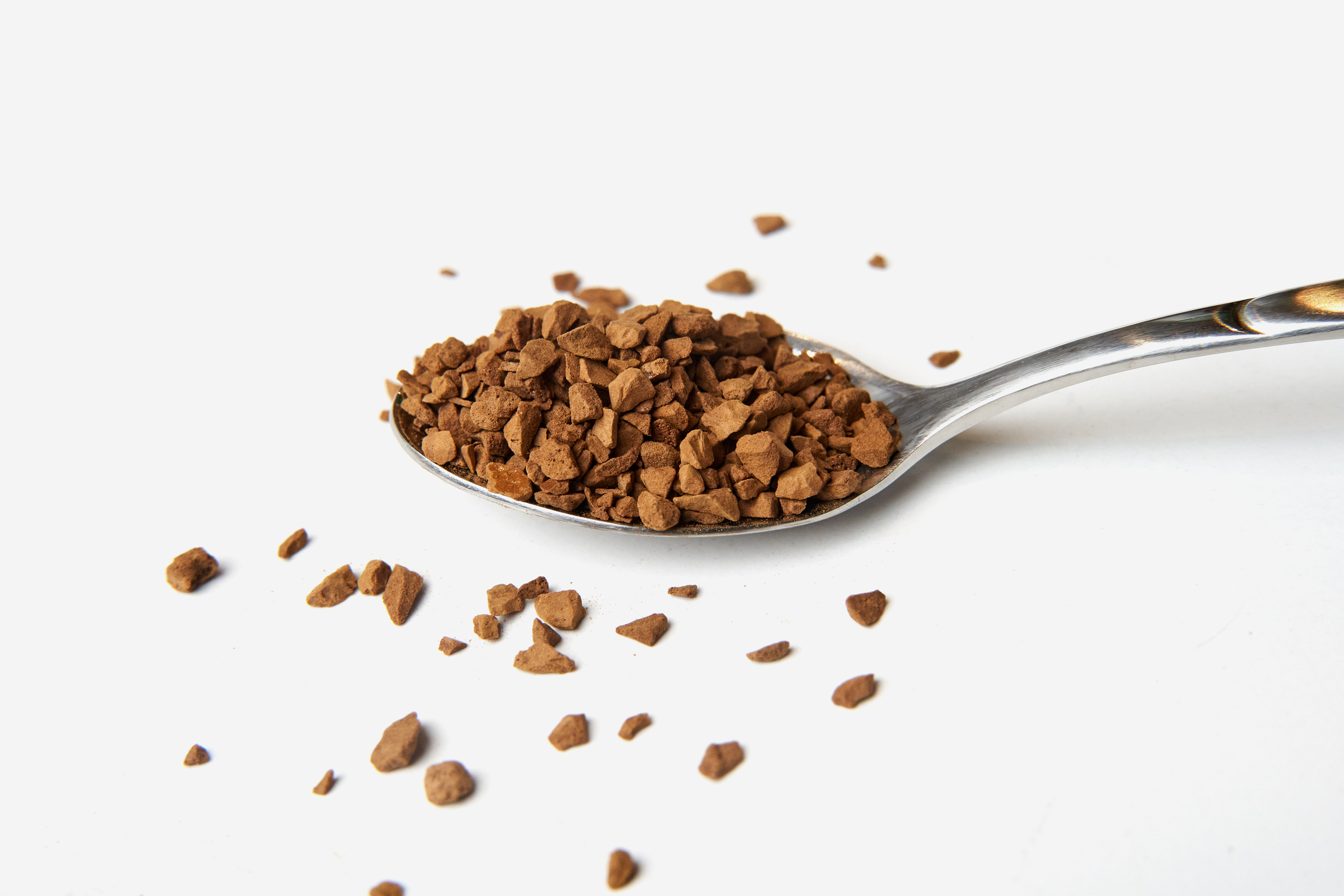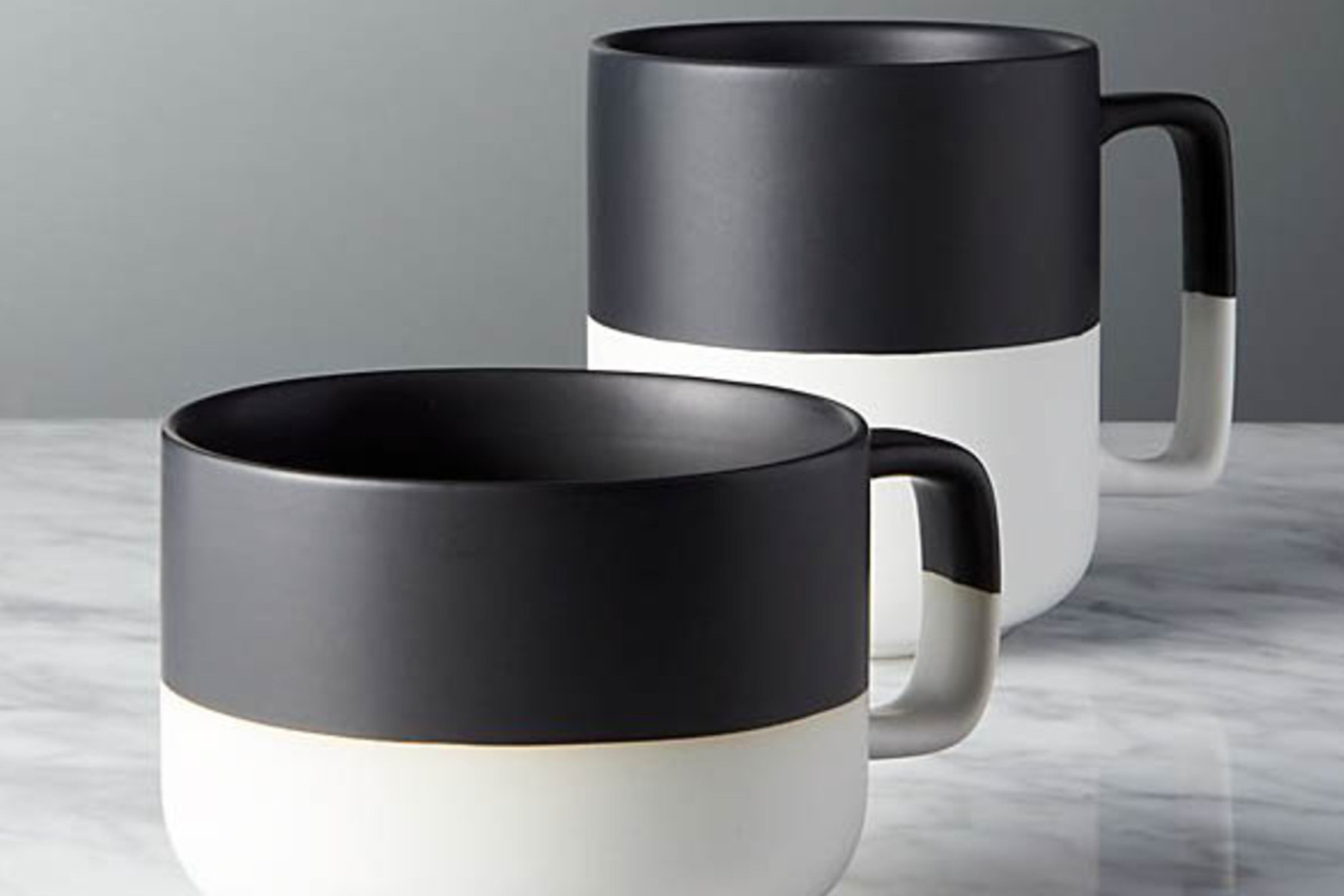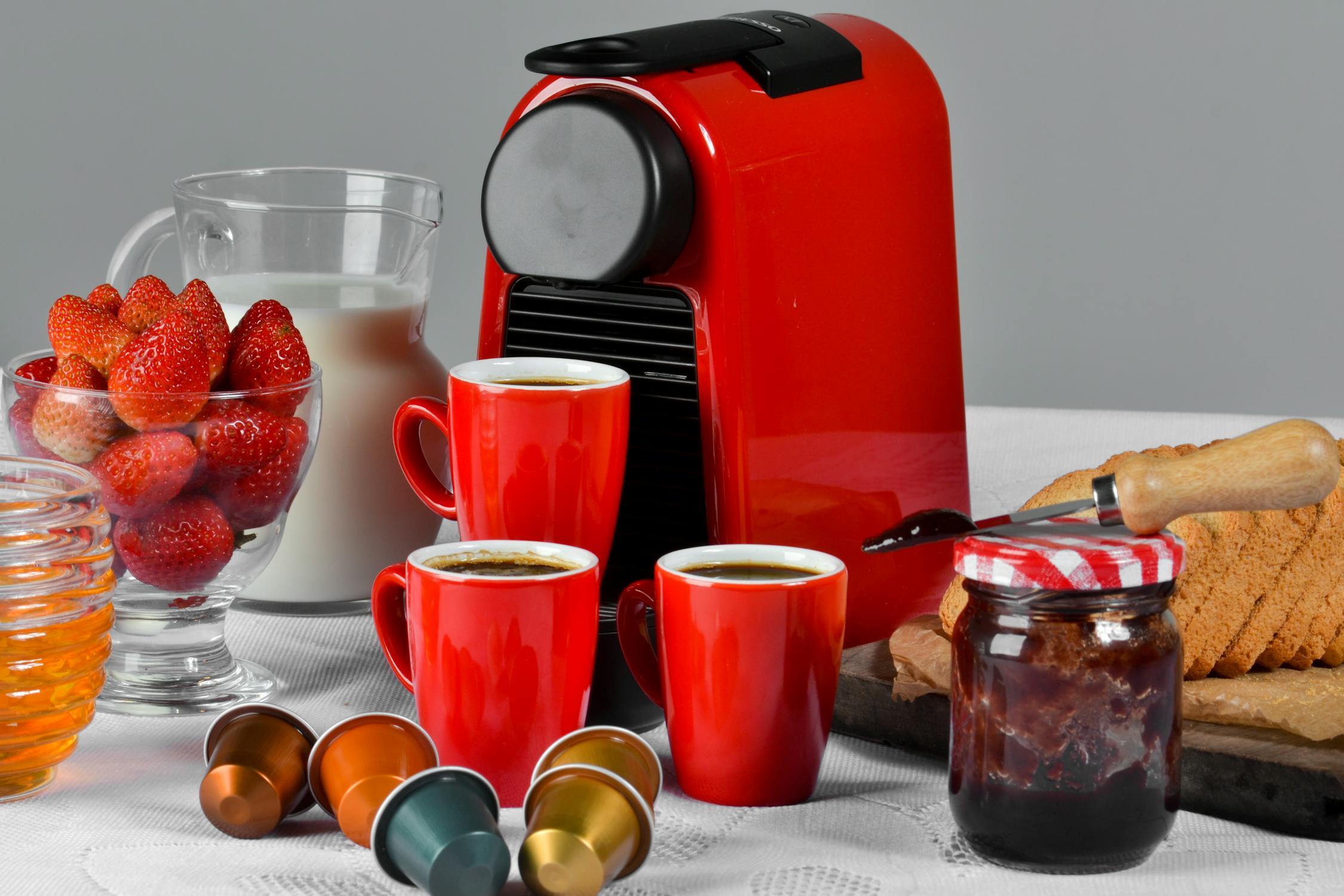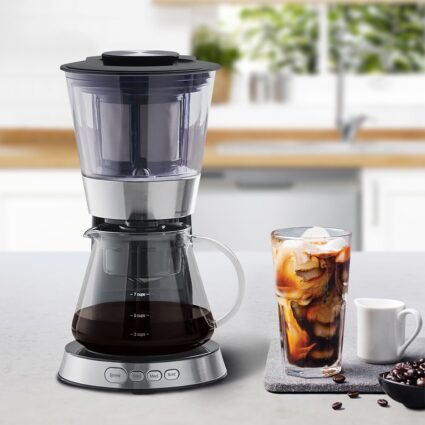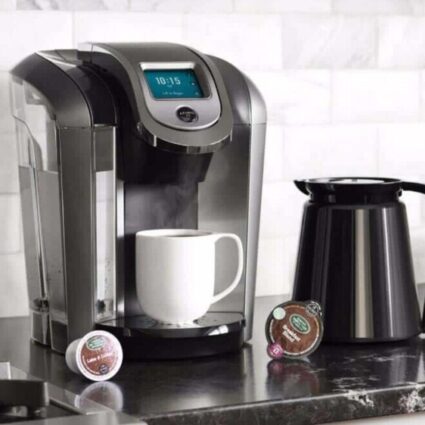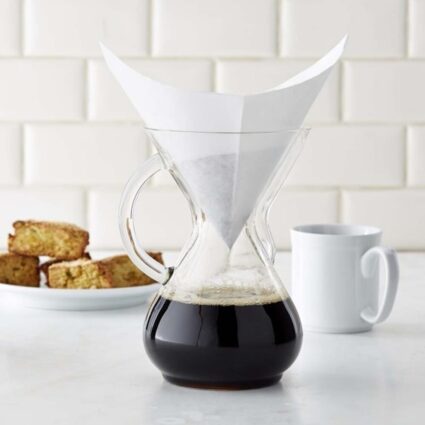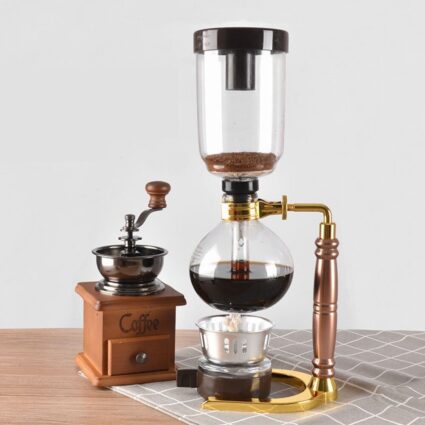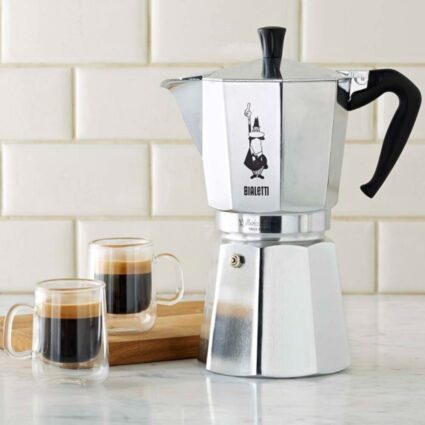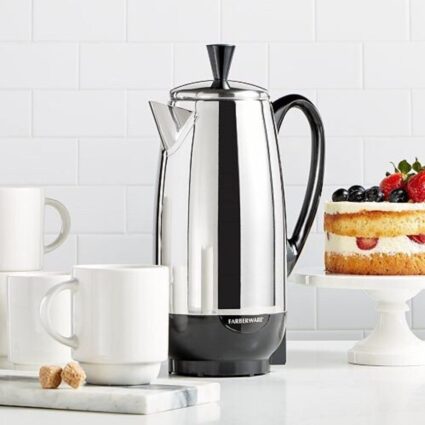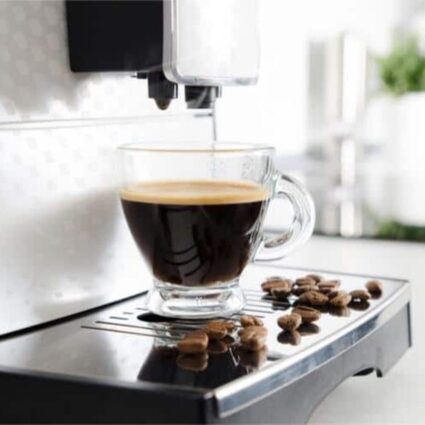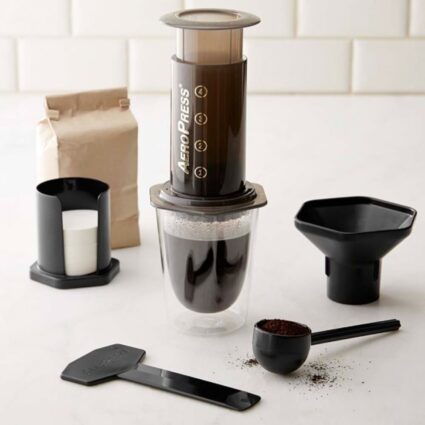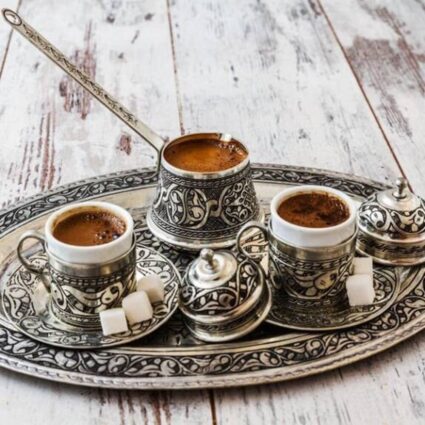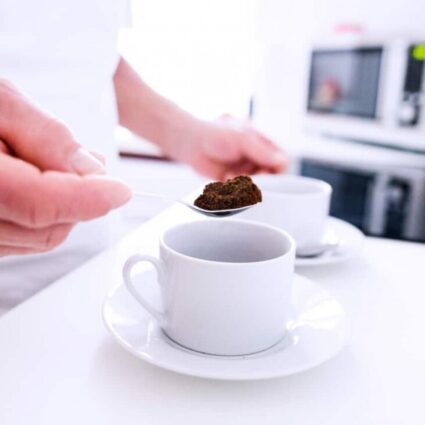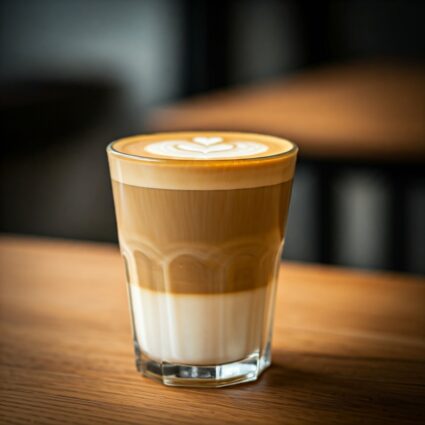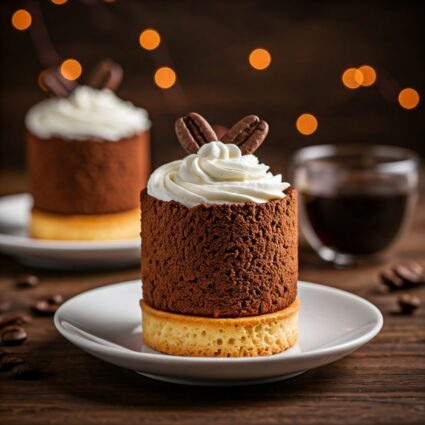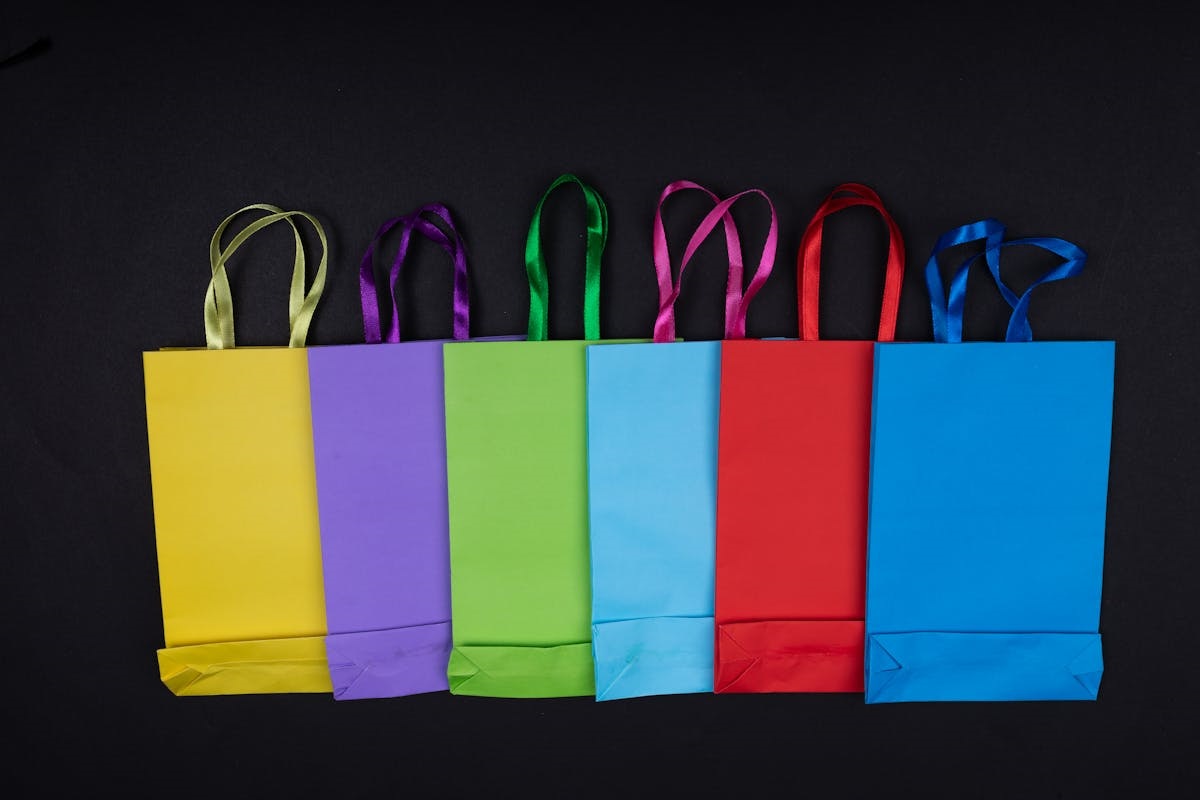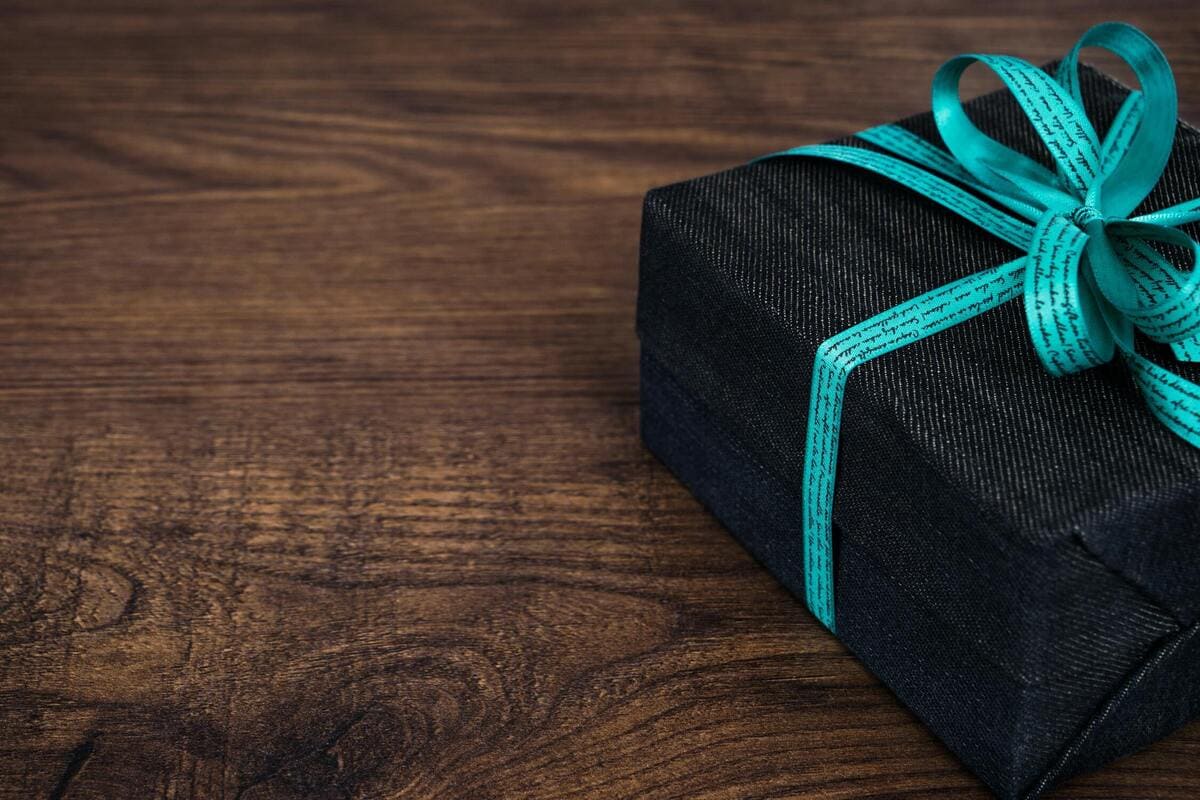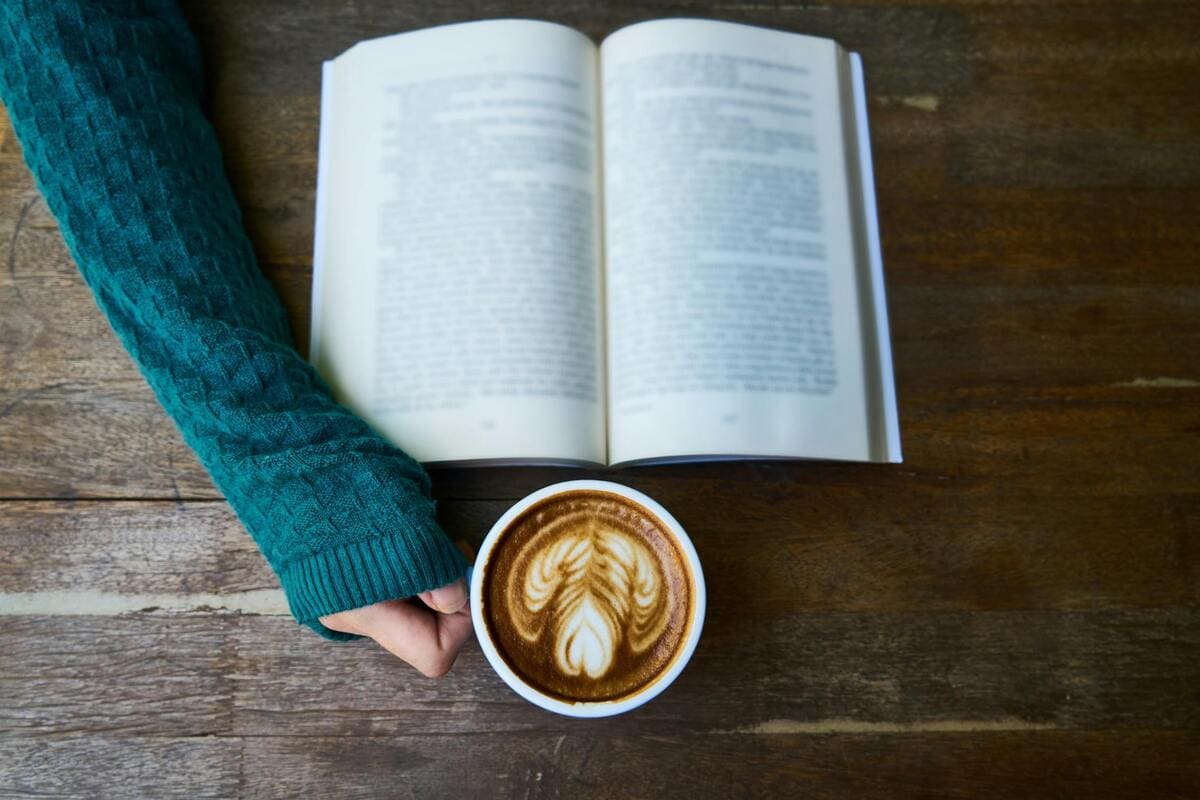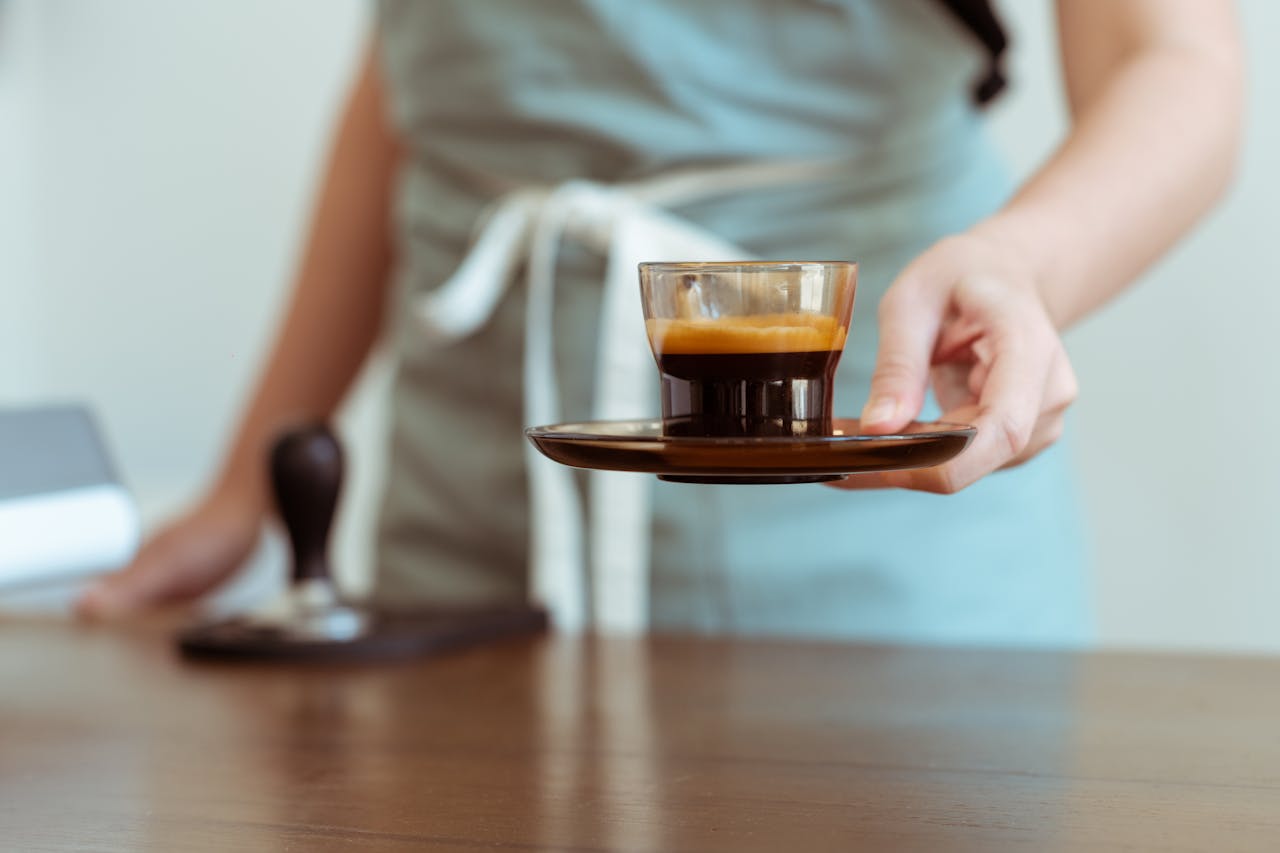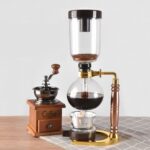VACUUM COFFEE / GABET
Coffee alchemistry
DESCRIPTION
Coffee made with Vacuum Coffee Maker or, in other words, with Siphon Coffee Maker, has a unique “gentle and soft” taste and is highly appreciated by true coffee lovers. Making vacuum coffee is a real sight.
The vacuum coffee unit consists of two siphons standing on top of each other, connected by a pipe. The bottom container is half filled with water, and the top container is filled with ground coffee. The coffee maker is then placed on a heater, typically an alcohol burner. As the water heats up, the air in the bottom container begins to heat up and expand. Boiling water under the pressure of heated air rises through the connecting pipe and infuse coffee in upper container. The flame is then turned off. The air in the lower container cools and shrinks in volume. That creates a negative pressure (vacuum), and the coffee from the upper container flows into the lower container. The coffee grounds stay in the upper chamber.
The true originator of this method of coffee preparation is not exactly known. However, the first patent for a similar device was received by a German named Loeff in Berlin in the 1830s. Frenchman Louis Gabet improved the device, obtaining a patent in 1844 for his design. At that time this devise was ceremoniously used before guests, gained popularity and was named “Gabet” after its creator.
There were many different vacuum coffee making designs in the Victorian era, each with its own characteristics. However, they all had one common flaw. They were all made of ordinary glass, because heat-resistant glass had not been invented at that time. While making the coffee and washing the parts, the coffee maker often broke, which made it useless. After the advent of electric automatic coffee makers, these coffee makers almost completely fell out of use. However, they continue to be highly valued by Coffee Experts for the unique taste characteristics of the resulting coffee.
PREPARATION
- Fill water into the bottom siphon
- Burn the alcohol burner over medium heat
- Place the fire under the bottom siphon
- Insert the filter into the upper siphon
- Check and make sure that the filter is installed correctly and there are no “gaps”.
- As the water boils, place the upper siphon on the lower siphon in a suitable manner
- Reduce the intensity of the fire
- Wait until the water rises from the bottom siphon to the top siphon
- Add ground coffee
- Slowly stir the coffee 10 times
- Wait for 1.5-2 minutes
- Stir the coffee again slowly 5 more times
- Turn off the flame
- Wait until the coffee from the upper siphon pours into the lower siphon
- Wait for 2-3 minutes
- Remove the upper siphon
- Pour coffee into mugs and serve
DIRECTIONS
| Coffee Type | 100% Arabica |
| Roasting Level | Medium (Vienna Roast) Dark (French Roast) |
| Grind Size | Medium (Filter Coffee) |
| Water Temperature | Almost Boiling: 197 ÷ 205 ° Fahrenheit |
| Coffee / Water Ratio | 4-6 gr coffee / 100 ml water (1.5-2 tablespoon for every cup) |
| Preparation Time | 5 minutes |
| Serving Size | 240 ml (8 Fl Oz) |
| Caffeine Amount in 1 Serving | 100-120 mg |
| Nutritional Value | 2-3 Calories |
| Daily Dosage | No more than 4 Cups |
| Serving Method | – As is; -With Milk or Cream; – With Sweetener or Dessert. |
W A R N I N G !
The given numbers are average and may be different from the actual values.
– Vacuum Coffee was popular and respected during the Victorian era.
– Because of the extremely fragile structure, Vacuum Coffee maker was used only on special occasions and for important guests..
– As Third Wave Coffee grows in popularity, Gabets are becoming one of the fastest-growing coffee makers worldwide.
– According to experts in the coffee field, vacuum-prepared coffee preserves the most subtle shades of coffee flavor.
– Beside the names “Vacuum Coffee” and “Gabet”, the coffee prepared in this way is also called “Siphon Coffee”.
DESCRIPTION
Coffee made with Vacuum Coffee Maker or, in other words, with Siphon Coffee Maker, has a unique “gentle and soft” taste and is highly appreciated by true coffee lovers. Making vacuum coffee is a real sight.
The vacuum coffee unit consists of two siphons standing on top of each other, connected by a pipe. The bottom container is half filled with water, and the top container is filled with ground coffee. The coffee maker is then placed on a heater, typically an alcohol burner. As the water heats up, the air in the bottom container begins to heat up and expand. Boiling water under the pressure of heated air rises through the connecting pipe and infuse coffee in upper container. The flame is then turned off. The air in the lower container cools and shrinks in volume. That creates a negative pressure (vacuum), and the coffee from the upper container flows into the lower container. The coffee grounds stay in the upper chamber.
The true originator of this method of coffee preparation is not exactly known. However, the first patent for a similar device was received by a German named Loeff in Berlin in the 1830s. Frenchman Louis Gabet improved the device, obtaining a patent in 1844 for his design. At that time this devise was ceremoniously used before guests, gained popularity and was named “Gabet” after its creator.
There were many different vacuum coffee making designs in the Victorian era, each with its own characteristics. However, they all had one common flaw. They were all made of ordinary glass, because heat-resistant glass had not been invented at that time. While making the coffee and washing the parts, the coffee maker often broke, which made it useless. After the advent of electric automatic coffee makers, these coffee makers almost completely fell out of use. However, they continue to be highly valued by Coffee Experts for the unique taste characteristics of the resulting coffee.
PREPARATION
- Fill water into the bottom siphon
- Burn the alcohol burner over medium heat
- Place the fire under the bottom siphon
- Insert the filter into the upper siphon
- Check and make sure that the filter is installed correctly and there are no “gaps”.
- As the water boils, place the upper siphon on the lower siphon in a suitable manner
- Reduce the intensity of the fire
- Wait until the water rises from the bottom siphon to the top siphon
- Add ground coffee
- Slowly stir the coffee 10 times
- Wait for 1.5-2 minutes
- Stir the coffee again slowly 5 more times
- Turn off the flame
- Wait until the coffee from the upper siphon pours into the lower siphon
- Wait for 2-3 minutes
- Remove the upper siphon
- Pour coffee into mugs and serve
DIRECTIONS
| Coffee Type | 100% Arabica |
| Roasting Level | Medium (Vienna Roast) Dark (French Roast) |
| Grind Size | Medium (Filter Coffee) |
| Water Temperature | Almost Boiling: 197 ÷ 205 ° Fahrenheit |
| Coffee / Water Ratio | 4-6 gr coffee / 100 ml water (1.5-2 tablespoon for every cup) |
| Preparation Time | 5 minutes |
| Serving Size | 240 ml (8 Fl Oz) |
| Caffeine Amount in 1 Serving | 100-120 mg |
| Nutritional Value | 2-3 Calories |
| Daily Dosage | No more than 4 Cups |
| Serving Method | – As is; -With Milk or Cream; – With Sweetener or Dessert. |
W A R N I N G !
The given numbers are average and may be different from the actual values.
FACTS
– Vacuum Coffee was popular and respected during the Victorian era.
– Because of the extremely fragile structure, Vacuum Coffee maker was used only on special occasions and for important guests.
– As Third Wave Coffee grows in popularity, Gabets are becoming one of the fastest-growing coffee makers worldwide.
– According to experts in the coffee field, vacuum-prepared coffee preserves the most subtle shades of coffee flavor.
– Beside the names “Vacuum Coffee” and “Gabet”, the coffee prepared in this way is also called “Siphon Coffee”.
